May the 4th, International Star Wars Day is the perfect time to discuss the architecture of the Star Wars universe, a visual tapestry that spans galaxies and cultures. One of the most striking and often underappreciated elements is its architecture. From monolithic space stations to dreamy desert settlements, Star Wars captures a variety of architectural styles, each reflecting the culture, politics, and atmosphere of its world. Let’s explore five architectural icons that define the galaxy far, far away.
The Brutalist Monolith: The Death Star
Perhaps the most ominous structure in the Star Wars canon, the Death Star is the pinnacle of brutalist architecture. Its sheer mass, monochrome palette, and emphasis on raw form over decorative design mirror the stark functionalism of 20th-century Brutalism.
Brutalism, derived from the French “béton brut” (raw concrete), evokes power, control, and authority—all values embraced by the Empire. The Death Star’s cold corridors, vast open interiors, and exposed infrastructure project an oppressive, utilitarian might. Its architecture is not designed for comfort or beauty—it is designed to intimidate.
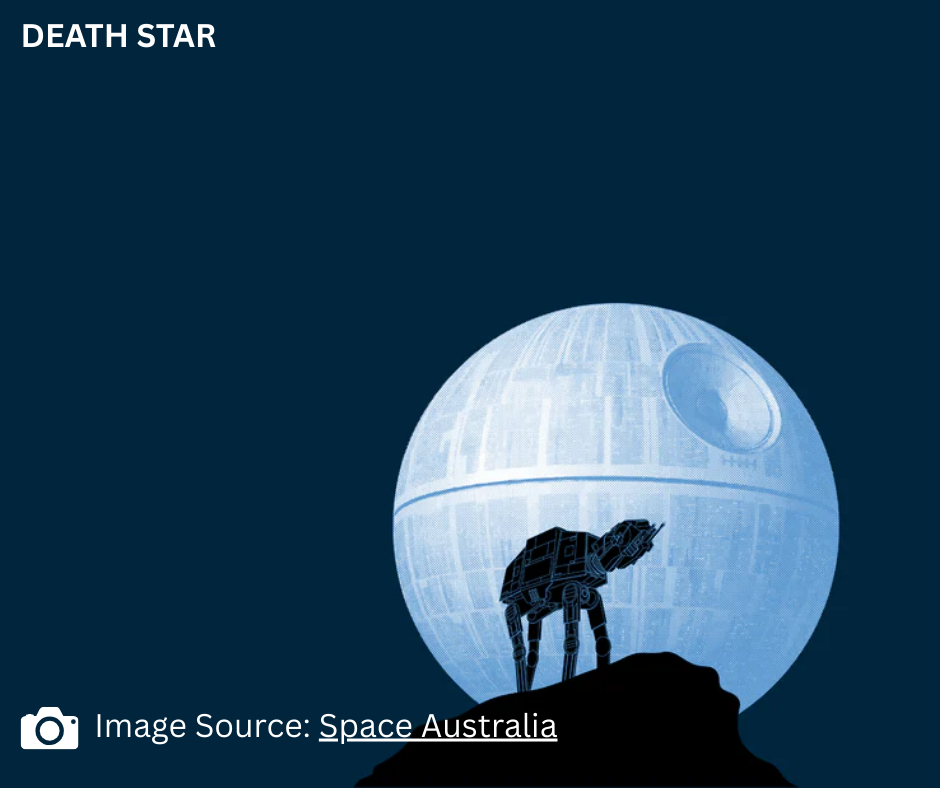
Tatooine’s Desert Vernacular: Adobe and Adaptation
In stark contrast, the buildings of Tatooine reflect a desert vernacular architecture rooted in sustainability and adaptation. With its earthen tones and organic forms, this environment brings to mind traditional adobe construction found in Middle Eastern and North African deserts.
The low-slung, domed dwellings of Tatooine are built from local materials and follow passive cooling strategies, a nod to real-world desert architecture. Structures are semi-subterranean to escape the blistering heat, with thick walls and small openings to minimize solar gain. It’s a design born of necessity—resilient, self-reliant, and modest.
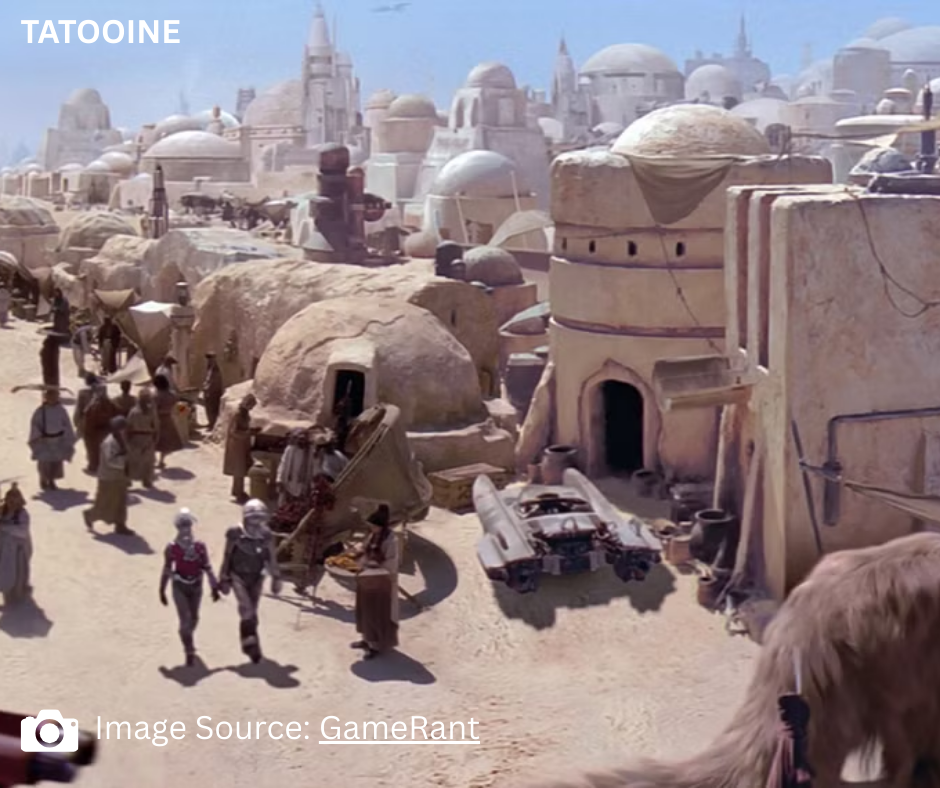
Naboo’s Renaissance Revival: Domes and Harmony
Naboo, especially in the capital city of Theed, is a vision of elegance, balance, and cultural reverence. Its domes and classical symmetry draw heavily from the Italian Renaissance. Think of the Pantheon in Rome or the domes of Florence and Venice—symbols of civic pride and spiritual transcendence.
The architecture of Naboo embodies harmony with nature and humanistic ideals. Curved colonnades, public plazas, and integration with the landscape reflect a society focused on enlightenment and peace. It serves as a sharp visual and philosophical contrast to the Death Star’s militaristic monumentality.
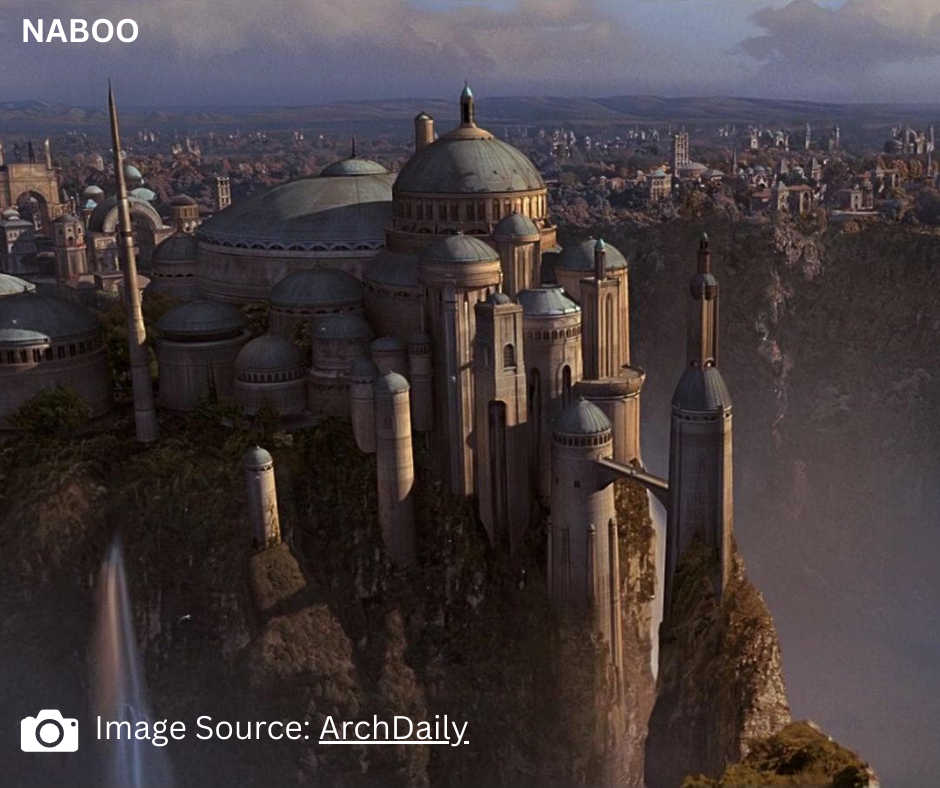
Coruscant’s High-Rise Urbanism: The Infinite City
Coruscant, the capital of the Galactic Republic, is the ultimate expression of vertical urbanism. The entire planet is covered by one sprawling megacity—a hyper-dense, layered metropolis where power resides in the clouds and the lower levels fall into shadow and obscurity.
This architectural vision recalls the urban planning theories of Le Corbusier mixed with the vertical chaos of cyberpunk cities. Skyscrapers stretch skyward with no visible end, each layer reflecting a different socioeconomic stratum. Coruscant critiques modern urban sprawl and questions the sustainability of unchecked vertical growth.
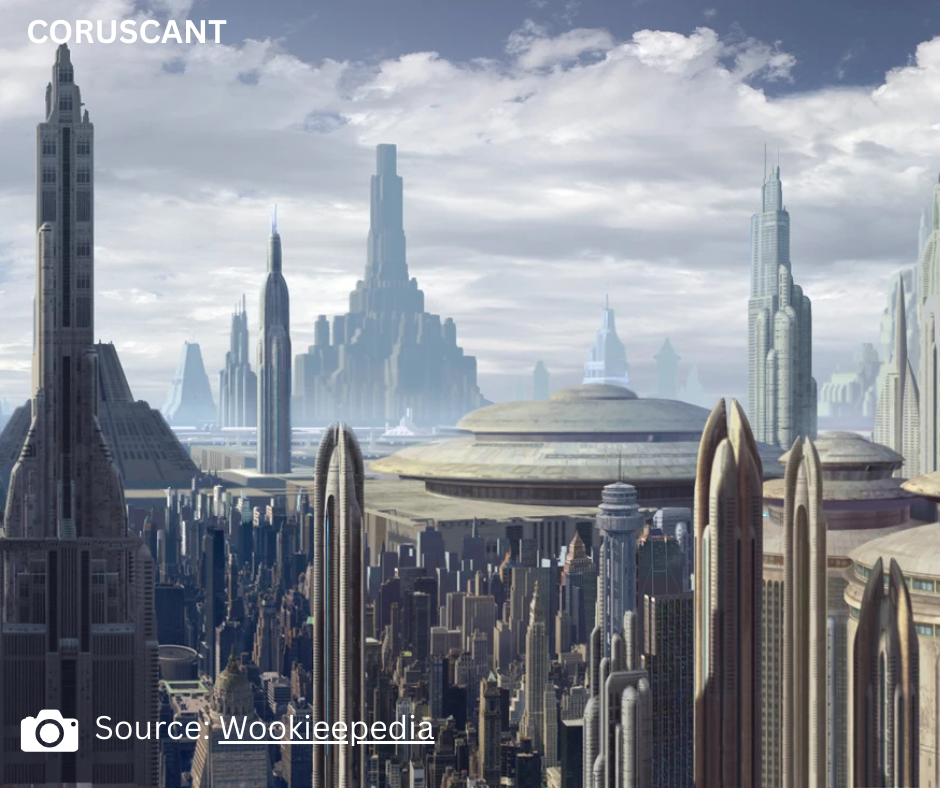
Cloud City’s Modernist Utopia: Clean Lines in the Sky
Hovering above the gas giant Bespin, Cloud City is a serene example of futuristic modernism. Its rounded edges, pristine white surfaces, and open interiors are reminiscent of mid-century modern architecture—specifically the Jet Age optimism of the 1960s.
Cloud City could easily be imagined as a creation of Eero Saarinen or Oscar Niemeyer, with its balance of form and function, and its emphasis on elegance and simplicity. It is utopian in aesthetic and atmosphere—a floating refuge from the conflict raging across the galaxy.
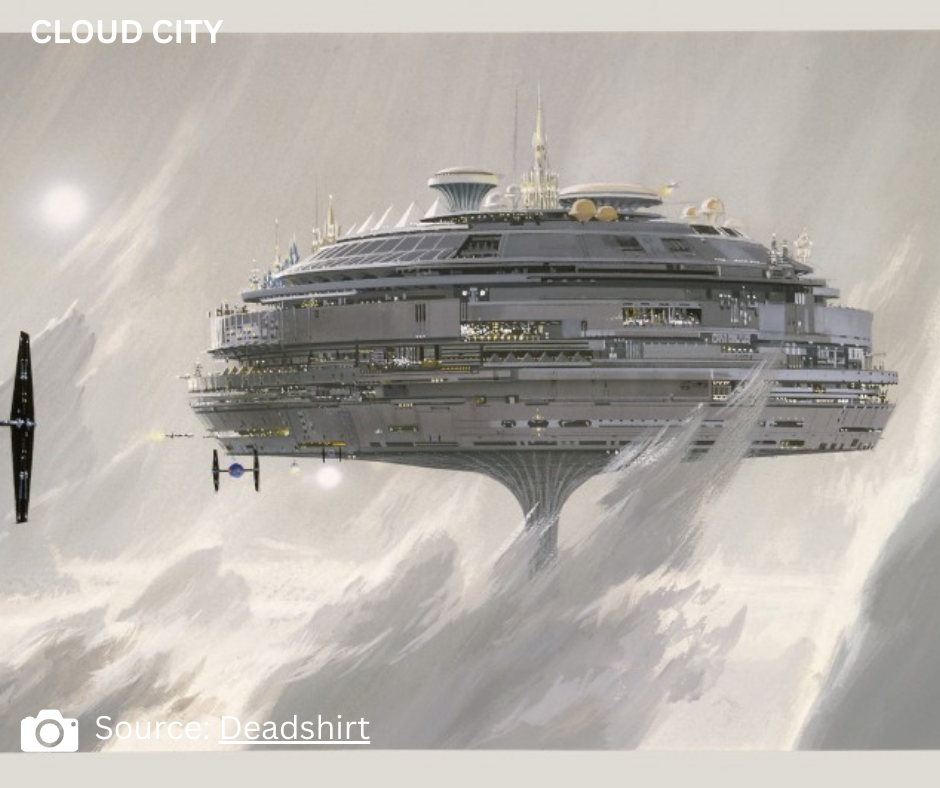
Final Thoughts
The architectural storytelling in Star Wars enriches its worldbuilding in ways that go far beyond visual spectacle. Each planet, each structure, is a cultural artifact that tells a deeper story—about power, survival, aspiration, and belief.
Whether you’re an architect, designer, or just a curious fan, the galaxy’s architecture offers inspiration from both our past and our imagined futures. From the Brutalist menace of the Death Star to the Renaissance serenity of Naboo, Star Wars invites us to see architecture as more than backdrop—it is character, culture, and cosmos.

